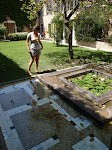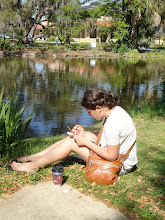Wednesday, April 29, 2009
attitude
full circle
safe for swimming
the cycle
filtration
Tuesday, April 21, 2009
staining
Thursday, April 16, 2009
reactivating the Carondelet Walk



 These images of the past depict the vibrant, activated space of the turning basin at the foot of the canal. The Carondelet Walk which culminated here, at the waterfront, was a populated area for townspeople to stroll and witness or be involved in the daily merchant shipping industry.
These images of the past depict the vibrant, activated space of the turning basin at the foot of the canal. The Carondelet Walk which culminated here, at the waterfront, was a populated area for townspeople to stroll and witness or be involved in the daily merchant shipping industry.Can this vibrancy be reactivated on the plot of greenspace adjacent to the last remaining remnants of the once prosperous canal?
possibly my final statement? yeah right...
How can architecture still define space for inhabitation, and
simultaneously embrace the effects of environmental processes?
All materials are impressionable, preserving environmental and human traces.
Water is the largest contributor to weathering - staining, decay, and
horizontal datum lines left by floods and canal tides. It is the discovery
of prior occurrences in a space that create intrigue and desire for interaction.
Weathered surfaces are defined through particular orientations and layers of materials.
Levels of porosity and degrees of repetition determine the preserving of more or less traces
on a material. Existing surfaces already containing traces are incorporated with new surfaces
to offer the understanding and education of the effects of water. Like the time sensitive effects of water, a place of temporal leisure and travel is created in the exterior environment.
to the south,
and streams (all of which flooded during Katrina). And walking through the city,
water is almost a constant visibility and when not a visibility, certainly a presence.
Wednesday, April 15, 2009

 The site exists on the former Carondelet Canal which was about 3 miles long spanning from the connection point of Bayou St. John all the way down to the "back of the city" or the back of downtown and the French Quarter. This canal was used as drainage as well as shipping, bringing goods from the lake down the bayou then down to the city via the canal. The canal was about 30 feet wide and was flanked by a large pedestrian walk, the Carondelet Walk, 64 feet in width. The narrowness of the canal forced an 80,000 sq. ft. turning basin at the foot, which was the site of Storeyville and is now bordered by St. Louis cemetary and Congo Square. The canal was constructed in 1794 and was used up until the beginning of the 20th century when another canal parallel to it and a few blocks to the west was built. It was called the New Basin Canal, after this one which was known as the Old Basin Canal. The New Basin Canal became more successful and along with the addition of railroad, the Old Basin Canal was deemed unnavigable, especially due to its narrow width and shallow depth. In 1927 it was filled in and now remains as a strip of green space. At one point the trip turned into a railroad track, perfect location for another route of transportation. But today, the strip remains empty. It presents an ideal location for a pedestrian route from Mid-City to downtown & the French Quarter...
The site exists on the former Carondelet Canal which was about 3 miles long spanning from the connection point of Bayou St. John all the way down to the "back of the city" or the back of downtown and the French Quarter. This canal was used as drainage as well as shipping, bringing goods from the lake down the bayou then down to the city via the canal. The canal was about 30 feet wide and was flanked by a large pedestrian walk, the Carondelet Walk, 64 feet in width. The narrowness of the canal forced an 80,000 sq. ft. turning basin at the foot, which was the site of Storeyville and is now bordered by St. Louis cemetary and Congo Square. The canal was constructed in 1794 and was used up until the beginning of the 20th century when another canal parallel to it and a few blocks to the west was built. It was called the New Basin Canal, after this one which was known as the Old Basin Canal. The New Basin Canal became more successful and along with the addition of railroad, the Old Basin Canal was deemed unnavigable, especially due to its narrow width and shallow depth. In 1927 it was filled in and now remains as a strip of green space. At one point the trip turned into a railroad track, perfect location for another route of transportation. But today, the strip remains empty. It presents an ideal location for a pedestrian route from Mid-City to downtown & the French Quarter...
elevation/natural levee & artificial levees
the list
maps
detail aerial
zoom out aerial
pencils
2h
hb
2b
mechanical
pens
gel roll
ball point
red
faber-castell M
faber-castell S
watercolors
brushes
thin
medium
camera
camera charger
ipod touch
ipod charger
headphones
computer?
phone charger!
summer weather clothes
skirt
shorts
tanks/camis
t shirts
dress
pjs
nice clothes?
sweatshirt
sunglasses
sandals
sneakers
toiletries
deodorant
toothbrush
toothpaste
hairbrush
leave in conditioner
make up
cash money
sketchbook
normal
painting
books?
Geographies of
An Unnatural Metropolis
Invisible cities
backpack or purse
research
levees
comparisons
site ideas
final ideas
transverse sections
MESSAGE FRANCES
snacks?




